Pelton Terms Uber-Citation "Cessna's Greatest Achievement"
Just moments ago, Cessna revealed at a press conference in
Washington, DC details of its recently-announced large cabin,
intercontinental aircraft... the Model 850 Citation Columbus.
Introduced as a proof-of-concept at NBAA 2006, Cessna was given the
go-ahead for the program by the Textron board of directors in
January, as ANN reported.
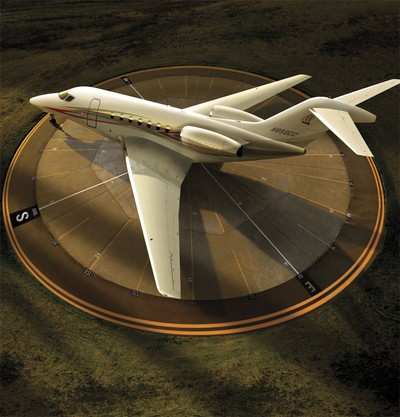
The Citation Columbus is designed for intercontinental travel
with a target range of 4,000 nautical miles at Mach .80 carrying
eight passengers. With the new plane will come a new turbofan --
the Pratt & Whitney Canada PW810 -- and Rockwell Collins' new
Pro Line Fusion advanced avionics system.
Cessna states it has reached an agreement in principle with
Spirit AeroSystems to produce the fuselage and empennage. Details
will be finalized in the coming weeks, according to the
company.

The all-new aircraft is Cessna's largest business jet to date,
and is expected to lead its segment with its combination of speed
and range. The aircraft's large cabin is expected to exceed top
competitor passenger seating room. The Columbus follows the design
philosophy of other Citations by using an aluminum airframe, and it
contains structural and cabin interior features to maximize
interior cabin space.
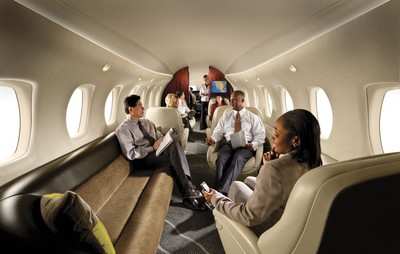
"We've spent the past five years deepening our customer and
segment knowledge so that we can be sure we are introducing a
transcontinental aircraft that the market wants," said Jack J.
Pelton, chairman, president and CEO of Cessna. "The Citation
Columbus is being designed to be the best value proposition in its
class. It will be manufactured with a strong focus on reliability
and ease of maintenance.
"This provides the perfect platform at the top end of our
product line for customers looking for more space, more range, more
economy and more capability," he added. "This aircraft will be
Cessna's greatest achievement."
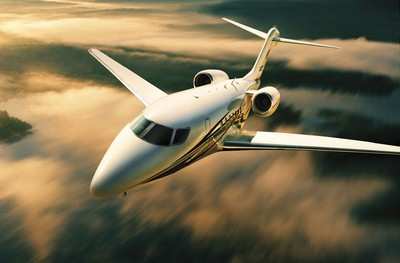
The Citation Columbus is expected to be the only aircraft in the
large-cabin class capable of 4,000 nautical miles non-stop at Mach
.80. Preliminary performance numbers set a maximum cruise speed of
488 knots (Mach .85), a maximum operating speed of Mach .86, a full
fuel payload of 1,950 pounds and takeoff field length of 5,400 feet
at maximum takeoff weight.
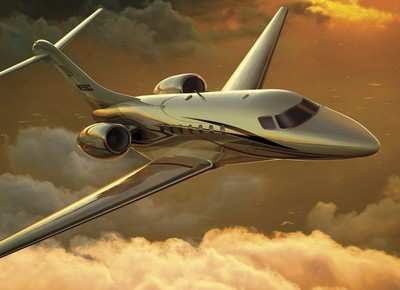
"In naming this new model, we looked for a word that embodies
the spirit of our company and the performance of this airplane,"
Pelton said. "With an adventurous and visionary attitude, explorer
Christopher Columbus is globally recognized as one of the first to
cross the Atlantic Ocean. That inspired us as we worked toward our
design goal. The Columbus opens up so many non-stop
transcontinental routes: Munich to New York, London to Dubai,
Sydney to Singapore, São Paulo to Miami, and many other
trips."
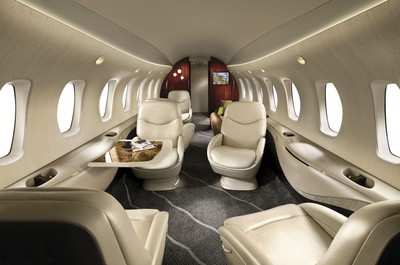
The 850 boasts a total length of 77 feet (23.5 meters) and a
wingspan of 80 feet (24.4 meters), with interior and exterior
storage compartments. Its cabin length of 36.3 feet (11.1 meters)
including interior baggage space is the longest in its class by
nearly two feet.
Configurable for up to 10 passengers, the cabin has generous
seating room and a low flat floor that provides standing aisle
height of 73 inches (1.85 meters). The interior balances style and
functionality while providing comfort, features and the flexibility
passengers expect with intercontinental range. Crew seats,
passenger seats, forward jump seat and an optional couch are
all-new designs.

Cessna says its engineering team and its co-development
suppliers have designed the clean-sheet Columbus to be one of the
most advanced, fuel-efficient, cleanest business jets ever
conceived. The newly-engineered wing is moderately swept, and the
entire aircraft surface is contoured based on results from the
computational fluid dynamics analysis and wind tunnel verification,
which allow for a design that supports the highest speeds with the
highest efficiency and least amount of drag.
The 850 will debut Pratt & Whitney Canada's next-generation,
8,830 pound-thrust PW810, an environmentally friendly engine that
features reductions in fuel burn, emissions and noise. The PW810
engine, which takes advantage of the latest proven advances in
material, aerodynamic and design technologies, will offer high
reliability at entry into service as well as thrust growth
capability.
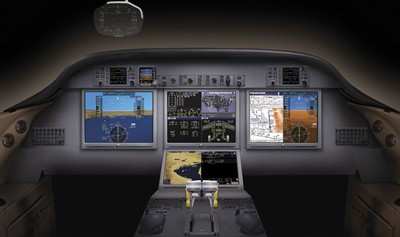
The cockpit will feature Pro Line Fusion avionics from Rockwell
Collins, which combines the capabilities of Pro Line 21 with
significant technological advancements. The fully integrated flight
deck has four landscape high-resolution 15-inch liquid crystal
displays working in concert with graphical flight planning,
synthetic-enhanced vision, auto throttle, Rockwell Collins'
award-winning MultiScan Hazard Detection system and an optional
head-up display.
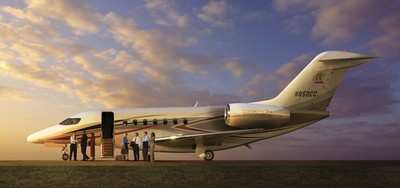
The initial price estimate for the Citation Columbus is $27
million in 2008 US dollars. Cessna plans to achieve Federal
Aviation Administration certification by the end of 2013, with
deliveries beginning in 2014.
 ANN's Daily Aero-Linx (05.06.25)
ANN's Daily Aero-Linx (05.06.25) ANN's Daily Aero-Term (05.06.25): Ultrahigh Frequency (UHF)
ANN's Daily Aero-Term (05.06.25): Ultrahigh Frequency (UHF) ANN FAQ: Q&A 101
ANN FAQ: Q&A 101 Classic Aero-TV: Virtual Reality Painting--PPG Leverages Technology for Training
Classic Aero-TV: Virtual Reality Painting--PPG Leverages Technology for Training Airborne 05.02.25: Joby Crewed Milestone, Diamond Club, Canadian Pilot Insurance
Airborne 05.02.25: Joby Crewed Milestone, Diamond Club, Canadian Pilot Insurance











